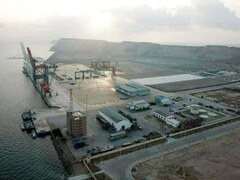After almost twenty years of keeping pharmaceutical prices capped, the new government finally decided to formally increase prices of medical drugs in Pakistan. This has been a long standing demand of the pharmaceutical industry in the country and for good reason.
Perhaps the factor that finally made the government cave in was the massive rupee depreciation over the past year. As almost 90 percent of the raw materials used in the pharma industry are imported, the industry was as good as dead if the costs had not been allowed to be passed on to the consumers.
 But it is not just the rupee depreciation. The cost of inputs including prices of electricity, gas as well as the minimum wage has increased manifold during the past two decades. Indeed, even the packaging material used for pharmaceutical products is imported and that too has witnessed a sharp increase in costs. Yet, pharmaceutical companies were not allowed to increase their prices till now.
But it is not just the rupee depreciation. The cost of inputs including prices of electricity, gas as well as the minimum wage has increased manifold during the past two decades. Indeed, even the packaging material used for pharmaceutical products is imported and that too has witnessed a sharp increase in costs. Yet, pharmaceutical companies were not allowed to increase their prices till now.
The Drug Regulatory Authority of Pakistan (DRAP) has decided to increase the maximum retail price of drugs under the hardship category by 9 percent which are decided on a case-to-case basis. The prices of all other drugs have been raised by 15 percent. In order to understand the damage this price fixation has caused some background context is in order.
The majority of pharmaceutical plants since the 1950s were mostly formulation plants. As the population and hence the demand for pharmaceuticals grew, more MNCs came in to the market till the 1970s. That could be termed as the golden period of the pharmaceutical industry in Pakistan after which things pretty much went downhill for the sector due to Bhutto’s nationalization and the Zia era. There was less regulation and smaller informal growth began to take place. However, in the 1990s`, DRAP (then the Ministry of Health) started taking a more active role in the pharma industry and regulation started to take place.
From 2000 onwards, MNCs started leaving the market due to sluggish increase in drug prices. The obvious reason for not increasing pharmaceutical drug price was populism- plain and simple. Successive governments did not want to make the unpopular decision of increasing drug prices in order to woo their electoral base. So when the recent devaluation took place and the price cap stayed in place, it left little room for the government except to raise prices. But the real question to ask is whether this hike comes as too little too late?
Due to the imposition of this price cap, the pharmaceutical industry in Pakistan did not undertake vertical integration as there was no incentive. A handful of companies undertake production of active pharmaceutical ingredients (APIs), and even those 15-20 APIs that are made locally import semi basic material and manufacture the final product. There were no financial incentives for any local company or MNC to invest in a full spectrum pharmaceutical plant that covers the entire production value chain process from basic ingredients to final formulation. Another example of populism trumping economic rationale.
At the same time, the industry in India and China grew exponentially and implemented vertical integration in their pharmaceutical industry. Here, there was no absurd price cap so there was plenty of financial incentive for the local players and MNCs to expand. Today, India’s pharma export stands at over $18 billion while Pakistan has barely managed to cross $200 million. Even the machinery utilised in Pakistan’s pharma sector is 70-80 percent Chinese and some specialised equipment such as injection filling lines are imported from India.
Now due to the time lag, the export potential that Pakistan could have achieved is lost. It is next to impossible to persuade any company to set up a vertically integrated pharmaceutical unit simply because the economies of scale generated by both China and India will be very difficult to replicate. There are other issues also which include the role of DRAP, the delay in registration of products and a lack of datasets to begin with. More on this in the coming days…





















Comments
Comments are closed.